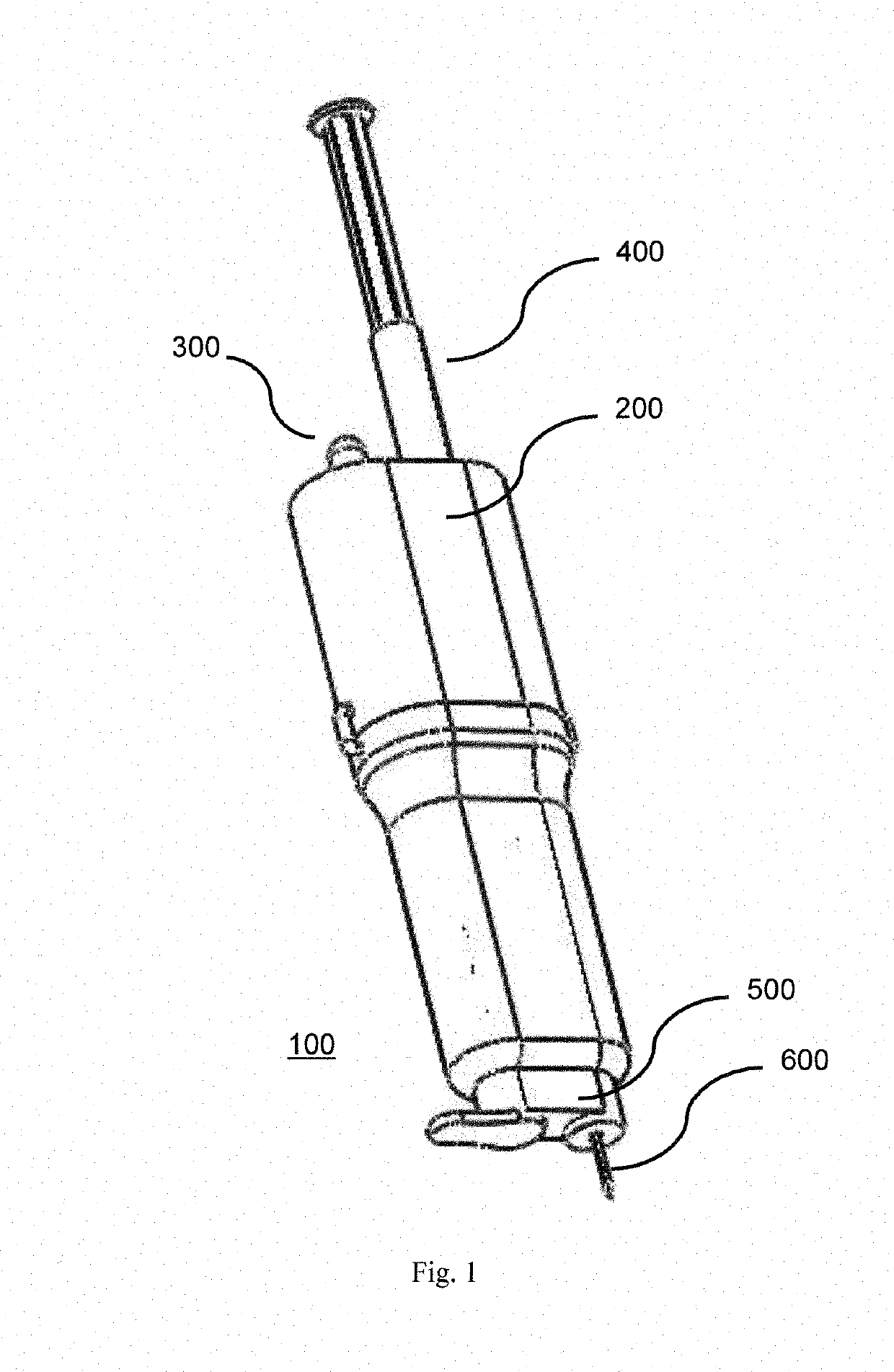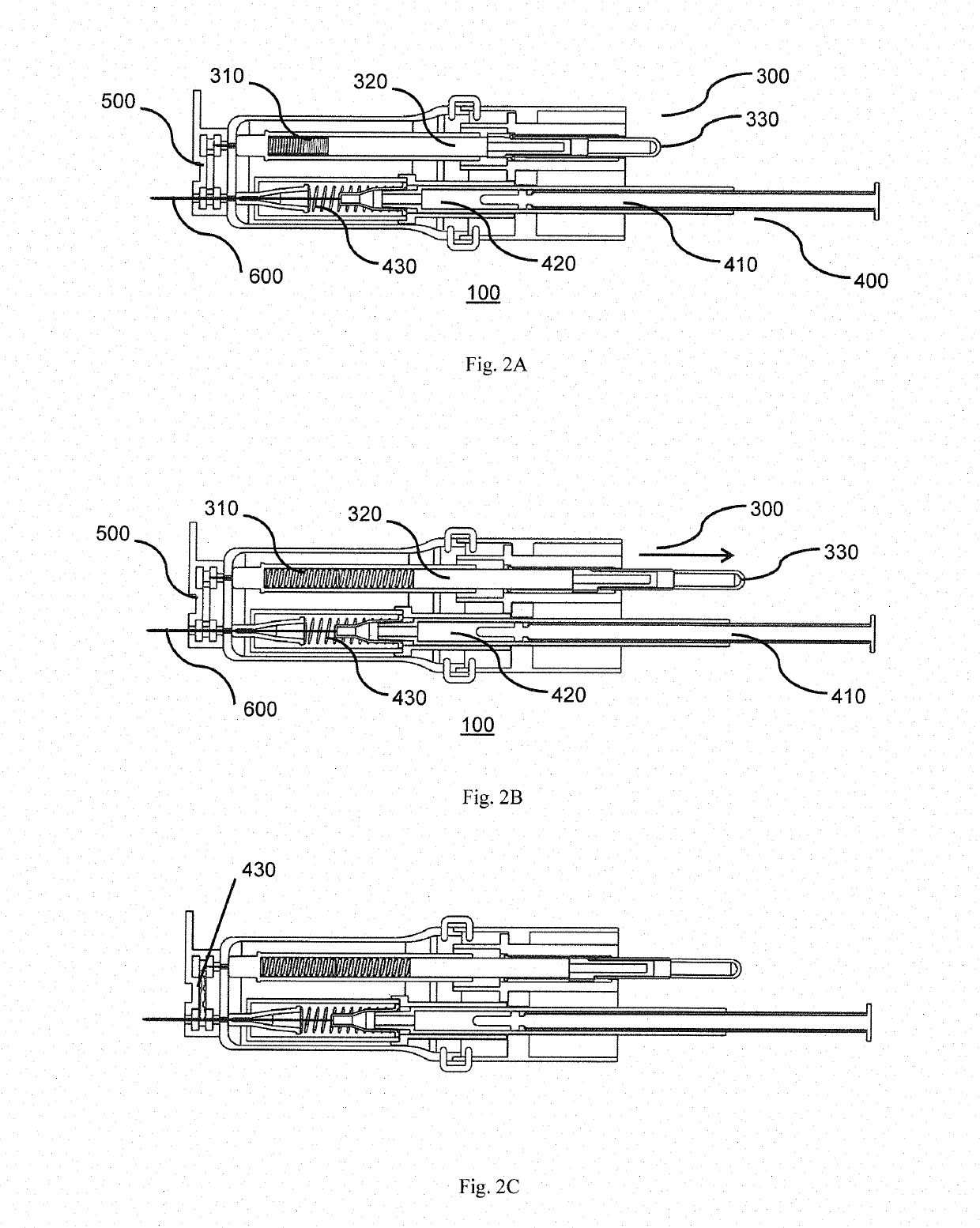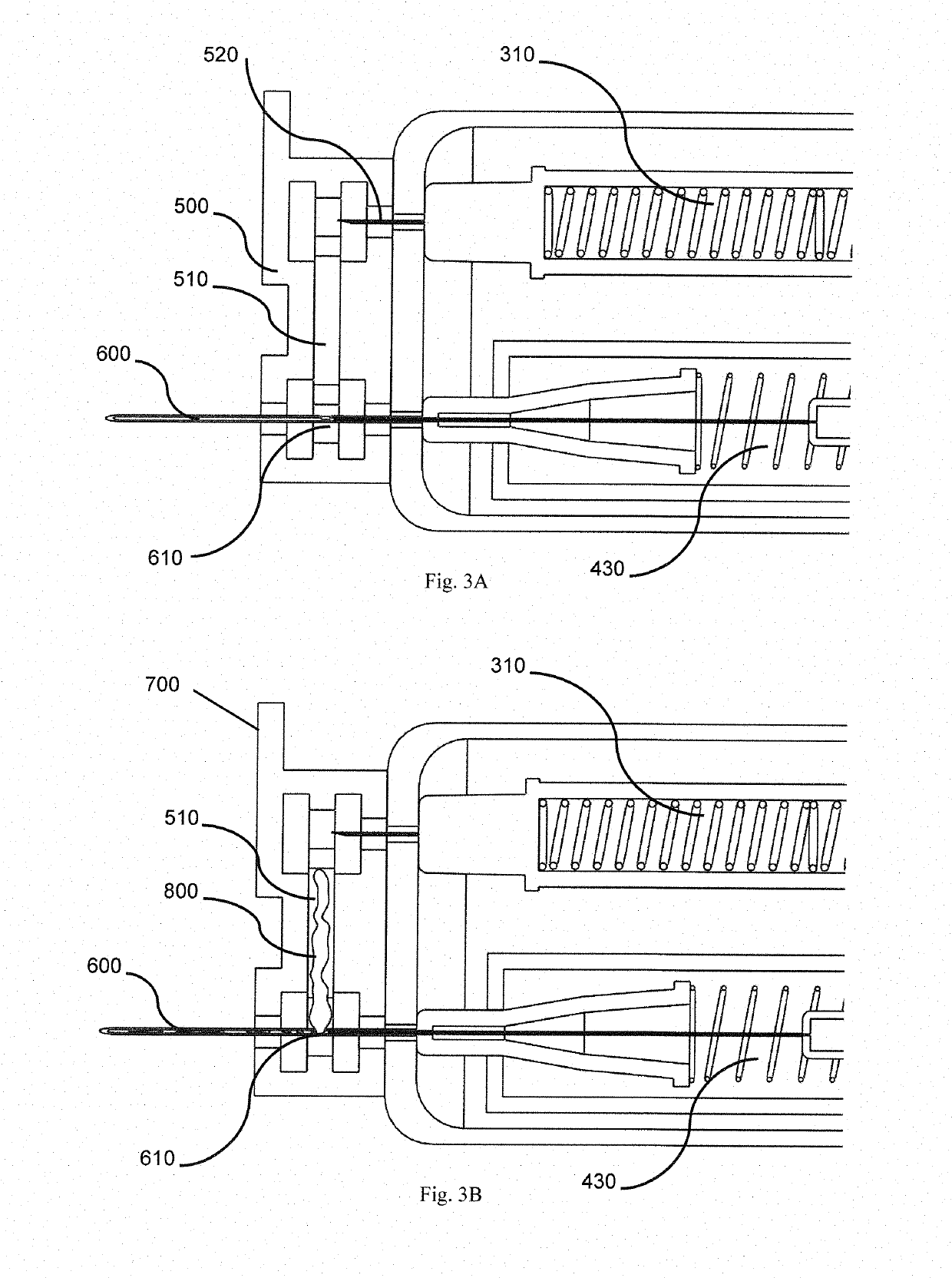An injection and extraction ophthalmic device
a technology of ophthalmic devices and injections, which is applied in the field of bodily fluid extraction, can solve the problems of increased risk of blindness infection in patients, unclear safety of repeated injections over long periods of time, damage to ocular structures, etc., and achieves safe and reliable drug delivery, safe and easy, and the effect of volum
- Summary
- Abstract
- Description
- Claims
- Application Information
AI Technical Summary
Benefits of technology
Problems solved by technology
Method used
Image
Examples
Embodiment Construction
[0037]Referring to the drawings, in order to provide swift extraction of a vitreous sample, cutting of gel-like state of the vitreous sample and delivery of a therapeutic drug, in one embodiment, the present invention provides a disposable handheld extraction and delivery device 100 to facilitate extraction of the vitreous sample from an eye of a patient, the device comprising a casing 200 extending from a proximal end to a distal end and at least one opening, at the distal end, a needle portion 600 having a through hole, protruding out from the at least one opening, the needle portion 600 includes at least one side hole along a predetermined length of the needle portion 600. The at least one side hole 610 of the needle portion 600 may be sized and shaped preferably to increase suction area. The at least one side hole 610 shaped in any manner preferably rectangular to maximise streamlined flow exchange. In the alternative, the at least one side hole 610 may be shaped circularly or s...
PUM
 Login to View More
Login to View More Abstract
Description
Claims
Application Information
 Login to View More
Login to View More - R&D
- Intellectual Property
- Life Sciences
- Materials
- Tech Scout
- Unparalleled Data Quality
- Higher Quality Content
- 60% Fewer Hallucinations
Browse by: Latest US Patents, China's latest patents, Technical Efficacy Thesaurus, Application Domain, Technology Topic, Popular Technical Reports.
© 2025 PatSnap. All rights reserved.Legal|Privacy policy|Modern Slavery Act Transparency Statement|Sitemap|About US| Contact US: help@patsnap.com



